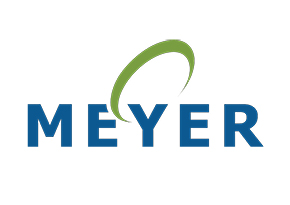- Case Studies
- The Investcorp Building, Oxford, Oxfordshire
The Investcorp Building, Oxford, Oxfordshire
Introduction
Zaha Hadid Architects has designed a new building for St Antony’s College, Oxford, a beautifully crafted structure with a sinuous, shimmering stainless steel façade, positioned with great care alongside its period neighbours. As Zaha Hadid explains: ‘The project maintains the detached character of the college's current buildings, allowing them to be read as separate elements, while introducing a contemporary building that conveys the past, present and future evolution of the college, university and city’. The new building, now known as the Investcorp Building, slots into the very restricted site, respecting the existing period buildings and landscape, while its stainless-steel facade softly reflects natural light to echo the building's context.
St Antony's College is one of the seven graduate colleges at Oxford and the Investcorp Building provides extra teaching space for its Middle East Centre in the form of a new lecture hall and a library with archive spaces and academic research areas, to cope with the dramatic recent increase in student numbers.
The new building is strategically sited behind two large mid-Victorian houses on the Woodstock Road, both part of St Antony’s College. It creates a link between the two, curves on plan to avoid a century-old sequoia tree in the adjacent garden and rises in a shimmering double curve, terminating in a vertical glazed façade which faces the Hilda Besse Building, a 1970s concrete-clad Brutalist structure by HKPA.
There are three storeys above ground and a basement containing a 117-seat lecture theatre and archive storage for photography and paper documents. From the basement rises a double-height space with a dramatic curved staircase leading to the ground floor, a multi-purpose gallery space that can also be used for informal meetings and study. The east wall of the gallery is a sinuous glazed curve overlooking the garden and the sequoia tree. Lifts, WC and kitchenette are concealed behind curved walls of perforated oak-veneered panels.
The first and second floors are enclosed within a double-curved structure of glulam timber frames, clad with stainless steel. The first floor houses the library - storage, reading rooms and offices including 26 reading desks and 2,200 square metres of linear book storage. The much smaller second floor contains an archive reading room and office which looks out over the Hilda Besse building. These two floors are naturally lit by 25 skylights.
The plaza at the building's entrance is paved with hexagonal granite tiles, while a new lawn doubles as a green roof above the basement lecture theatre.
The basement, ground floor and the first floor slab are of cast in-situ concrete. The lecture theatre in the basement is a column-free space, roofed with pre-cast concrete planks which span approximately 10 metres between retaining walls. A drainage system below the foundations ensures that the nearby sequoia tree and its extensive root system receive adequate moisture. On the ground floor the concrete wall and ceiling surfaces of the gallery are exposed and linear lighting slots were designed to sit within the exposed soffit of the first floor slab. The first floor slab itself is supported along the curved glazed wall of the gallery by a large V-shaped concrete column.
The first and second floors are enclosed within the double-curved roof, comprising a series of 165 x 495mm braced glulam portals rising from the first floor slab. This fluid roof form, clad with stainless steel, covers the footprint of the building and the curve partially cantilevers over the external pavement. As the glulam portals are entirely concealed, the supplier, Constructional Timber, could connect the curved glulam members with face-bolted steel connection plates.
A timber structure was chosen for several reasons: it cost less than a steel structure but in particular, the precise geometry of the roof was much easier to achieve by using timber – it allowed the detailing to be clear and simple while creating the precise curved shape of the roof deck.
Timber also offered advantages over steel in its ability to withstand fire. By calculating the rate of charring, the glulam beams could be designed to resist fire without any need for cladding or extra protection.
Structural engineers AKTII describe the design of the structure:
‘An orthogonal pattern was adopted to support the stainless steel cladding as it was the most effective approach in terms of support, forming an array of straight frames that change dimensionally according to the building’s form. In the perpendicular direction to these main elements, horizontal elements provide stability and complete the structural system. The density of the structural pattern was determined by the skylights, leading to typical 1.8 metre spacing between frames which was also fine enough to allow the construction of a smooth curved surface.
Most of the floor below the roof is a column-free space with essentially two lines of vertical support at the front and back of the building, inducing relatively long spans as well as requiring moment frame action for lateral stability, which is expressed in the roof’s cross section. At the front of the building, the frames are directly supported by the first floor slab edge, while at the back the support is provided by the same slab and cantilevers in other areas from the top of the west-facing wall. Stability in the longitudinal direction is guaranteed by diagonal bracing.
The curved nature of the building required coordination of the structure with architecture and services. AKTII implemented BIM technology to accurately position and coordinate structural elements within the three-dimensional curved envelope’.
The internal timber walls
The architect designed a series of internal partition wall panels, flexible enough to accommodate curves on plan while also providing unobtrusive sound-absorbency. The panels are of oak-veneered ply, perforated with acoustic holes and lined with acoustically-absorbing material. Rising from the basement hall, they line one side of the double-height gallery on the ground floor; on upper floors they form curved walls in the library reading room and in the archive reading room on the second floor.
In total the panels in the gallery and the library areas are perforated with more than 80,000 CNC-drilled acoustic holes; they fill 20 per cent of each panel and reduce in diameter as they approach the upper and lower edges of the panels and the sides. (On the upper floors, adjacent to the glazed south façade, the reducing diameters of the holes in the panels reflect the reducing fritted white dots on the glazing).
Similar oak-veneered panels, 24mm thick but unlined with acoustic-absorbing material, line the walls of the basement lecture theatre; they rise to the ceiling in an elegant curve with tapered lighting slots fitted between them. The areas of acoustic holes are limited to diamond-shaped areas where speakers are concealed behind the panels. The lighting in the ceiling is concealed in ply support boxes lined with white-painted ply curves and fixed above the gaps between the panels.
The oak veneer used for all the wall panels is FSC-certified American oak, quarter-cut from a single log, with the grain book-matched and butt-matched along the panels and between adjacent panels.
Fabrication of the panels began with individual 4mm birch ply layers, which were curved in a hydraulic press before being glue-laminated together and edged with 8mm solid oak lipping. The panels were then laminated with the 0.6mm oak veneers. Book matching the grain was especially complex to achieve in the double-curved upper corners of the lecture theatre, where the laminates had to be applied as small strips.
The laminated panels were then lined with acoustic absorption material, painted black on the exposed face, and factory coated with a clear satin matt finish. A timber frame was fixed to the back of the panels; this in turn was connected to a support system fixed to the cast-in-situ concrete walls and, in the lecture theatre, the precast concrete plank floors. The panel-to-panel fixing was made by a concealed tongue with a 5mm square-edged gap; the tongue also gives lateral support to the adjacent panel.
May 2015
Year Published:January 2016
Building Type:Postgraduate college building
Location:Oxford
Client:Middle East Centre, St Antony’s College, University of Oxford
Architect:Zaha Hadid Architects
Structural Engineer: Mechanical/ Electrical/ Acoustic Engineer:Max Fordham
Main Contractor:BAM Construction
Glulam Supplier: Internal Timber Wall Panels:Timber Engineering Connections
Timber Elements:Double-curved roof structure, internal timber wall panels
Timber Species:FSC-certified American oak, European whitewood
Awards:Oxford Preservation Trust Award 2015. Lux Award 2015.
Suggested Reading
Specifying externally exposed structural timber
This Wood Information Sheet (WIS) looks at some of the factors to consider when specifying a desired service life for structural timbers that are to be exposed outdoors but not in contact with the ground.
This WIS addresses general principles of structural design only, giving an overview of the...
24/11/2017
Standards Update October 2017
An update of British, European and International Standards relating to timber, including new and revised Standards, those withdrawn or amended and drafts now available for public comment, updated bimonthly.
30/10/2017
List of British Standards October 2017
A list of British Standards which relate directly to timber, updated bimonthly.
30/10/2017
























